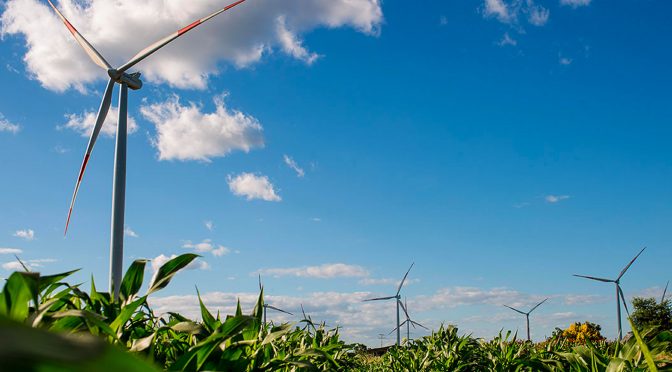Thanks to plants spread all over the world, Enel Green Power is leading the energy transition to decarbonization. Here we introduce the next stages of growth, principally through wind and solar power, with an eye on storage and hydrogen, too.
In the new decade that has just begun with 2021, Enel is working harder than ever to sharply accelerate the energy transition by growing renewables and reducing greenhouse emissions. With the decarbonization of electricity generation becoming more necessary ever, the use of renewable energy sources to power our electricity systems has to grow exponentially, which is something the Group has been committed to for years now.
Accelerating the energy transition
Enel Green Power is leading the transition to a decarbonized society with a record 3,106 megawatts built in 2020 alone. This means it manages a total of around 49 gigawatts of renewable capacity, confirming its status as the world’s largest operator in the renewables sector and its role as a supermajor in the area.
The more than 40 plants that have developed this capacity are mainly wind (2.284 MW) and solar-powered (803 MW), with 508 MW in Europe, mainly in Spain. Most of the 879 MW generated in Latin America is concentrated in Brazil. However, the United States has been a major contributor too, with most of the 1,386 MW from North America generated there. Plants in Africa, Asia and Oceania have developed a capacity of 333 MW as well.
New goals for 2021
In 2021 alone, Enel Green Power will be adding a further 5.8 GW of new capacity, practically doubling the figure of 3,106 MW introduced in 2020. This year, EGP will also be repowering plants, mostly hydroelectric stations, to reach 1 GW. The South American nations, notably Brazil and Chile, will be leading the capacity growth in 2021, followed by the United States, which is expected to add an extra 1 GW or so. In the Iberian Peninsula, the goal is to exceed 700 MW. South Africa and India will also be introducing significant new capacity with combined growth in 2021 of approximately 1.3 GW.
Projected production in 2023 is 245 TWh, which is expected to be comprised of 26% hydropower, 25% wind power, 3% solar power and 3% geothermal. This means a jump of 10% by 2023 for wind power and 8% for solar energy.
The race to 2030
The Group expects to triple its installed capacity by 2030, still primarily from wind and solar sources, thus generating around 11.3 TWh at full capacity. This achievement will prevent 6.86 million tons of CO2 from being emitted into the atmosphere each year.
The percentage breakdown of wind and solar energy may vary from year to year, but in the long term, it is estimated to be split fairly evenly between the two, with solar accounting for 53% and wind 47%.
In parallel with the growth of renewables, technologies that make the system more flexible will also be making rapid strides, one example being storage. This provides a very successful way for renewable plants – which rely on energy sources that are intermittent and unplannable by nature – to do their job better, by storing energy to feed into the grid when required.
The current forecast is that by 2030, 30% of EGP plants will be connected to a Battery Energy Storage System (BESS). The aim is to install over 2.3 GW of operational BESS by 2023, rising to around 20 GWh by 2030.
Currently, Renewables O&M manages two storage projects, one of 22 MW in Cremzow (Germany) and the other of 2 MW in Potenza (Italy). A further eight projects have been approved in the USA, amounting to a total of 607 MW/906 MWh, in addition to a 35 MW/140 MWh project in Italy and a 20 MW/40 MWh one in Portugal. A further 10 projects are in the works, amounting to a total of 662 MW/1086 MWh, of which plants totaling 287 MW/426 MWh will be under construction by 2021.
However, another contribution to decarbonization is coming shortly from green hydrogen production. A special team formed in May 2020 has been tasked with developing this new activity, which will help complete Enel’s green electrification process, particularly in heavy industry: iron and steel plants, fertilizer factories, glassworks, etc. To date, projects with a total of 600 MW are also being evaluated in hydrogen production facilities, the majority of which are in Italy, Spain, the USA and Chile.
Construction of the first of these plants should start this year, resulting in a total installed capacity of 120 MW with an annual output of 5,000 tons by 2023. By 2030, there will be over 2 GW of installed capacity producing more than 90,000 tons of hydrogen each year.


